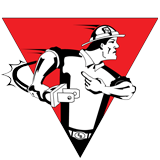An electrical home inspection is a necessary part of maintaining your home. It is recommended to get an electrical inspection at least every 10 years. However, if you notice any signs of an electrical issue, get an electrical home inspection right away. Below you will find 6 essential parts of an electrical home inspection checklist.
6 Essential Parts of an Electrical Home Inspection Checklist
There are a number of components to an electrical home inspection. However, the following are the foundational components of the electrical inspection of your home.
Electrical Service Panel:
It is critical to check the electrical service panel during an electrical home inspection. The service panel is the central point for electricity in a home. Also referred to as a “load center,” the electrical service panel can be found mounted on a wall inside or outside of your home. The electrical panel contains breakers and wires, or fuses if it’s older. There are a number of things to look for when inspecting an electrical service panel, including loose breakers, burn marks, breakers that feel warm, visible damage, or a lack of a main disconnect switch. You should also look for pennies behind breakers. This can be very dangerous and should be removed as the copper prevents the fuses from blowing in the event that they are overloaded.
Federal Pacific Brand Service Panel:
Certain load centers require more during an inspection during an electrical home inspection. If the load center is Federal Pacific brand, use caution. Some of them are defective and are a higher fire risk. Not all of these panels are defective, so it’s important to look for specific Federal Pacific breakers. If it is a FP Stab-Lok breaker, it is a serious fire hazard and should be promptly addressed.
GFCI Protection in Kitchens:
GFCI (“ground fault circuit interrupter”) protection in kitchens, in addition to any other wet areas of the home, should be looked at during an electrical home inspection. These are often found in the kitchen, bathroom, and laundry room and require outlets with GFCI or protection.
Aluminum Wiring:
Aluminum wiring should be examined during an electrical home inspection. While aluminum wires can be safe for years, they can pose some serious issues. First, aluminum wiring is likely old and needs to be updated. Additionally, aluminum can change over time which can be a fire hazard. Aluminum is much softer than copper and does not conduct electricity as well as other materials, such as copper. The soft nature of the material results in it expanding and contracting. Over time this can loosen the electrical connections and result in serious harm.
Overlamping Light Fixtures:
Overlamping light fixtures need to be examined during an electrical home inspection because they are a fire hazard. While it is not an electrical issue per se, overlamping light fixtures can heat up and melt which can start a fire. Overlamping occurs when a light bulb with a higher wattage than what is recommended for the particular fixture is used. Work with electricians for residential services as they are skilled and experienced in the field.
Push-in Connections:
Any push-in connections in the home should be looked at during an electrical home inspection. Most professionals don’t use push-in connections. They are considered to be more a do-it-yourself method. Professional electricians for hire prefer to write in receptacles using a binding head screw instead of a push-in connection. While the push-in connection method is considered to be safe, they are not the preferred choice. This is because push-in connections have less contact with the wire and can damage the copper or aluminum material.

